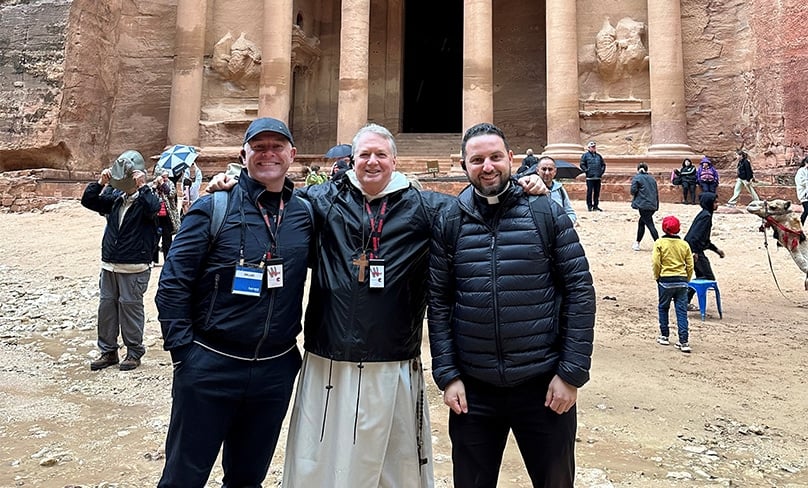
In recent weeks, Archbishop Anthony Fisher OP has led a group of Catholic school leaders on a pilgrimage to the Holy Land and Italy. Social media posts have pointed to the significance of the experience, with many describing it as life-changing. The power and poignancy of their reflections has not just come from what has been said but it is also captured in the images of “encounter” that have been shared.
Pilgrimage is not an uncommon experience for Australians. It is fuelled in part by our “tyranny of distance,” and of course by the great expanse of our country. We travel to places of historical, cultural and natural significance: Uluru and the Great Barrier Reef, and many make the journey overseas to the major battlefields of the first and second world wars, especially Gallipoli. With so many of us coming from other backgrounds, vast numbers journey to their ancestral homes.

Traditionally, pilgrimage has been defined and associated with a journey in search of truth, and a quest for the sacred and the holy. It is a search for meaning. The Church teaches that “the desire for God is written in the human heart” (CCC, n.27) and this desire results in a restless searching for the transcendent. It is from this notion of searching that we can each aptly be described as a homo viator, a life-long pilgrim.
Going on pilgrimage typically involves a range of motivations. While some pilgrims travel for explicitly religious reasons others are in search of clarification. They are “meaning seekers,” unsure as to what they are looking for or what they might find. They are hoping to be changed by the experience in search of answers that they cannot find at home.
When people talk about pilgrimage, they often give the impression that a dichotomy exists between “journey” and “destination.” Nothing could be further from the truth. Both elements are central to the total experience, and both work at multiple levels. Journeys of course extend beyond those which are external and physical. Often, the most profound journeys are inner, are cathartic in nature, and involve an emotional or spiritual awakening.
The choice of destinations for the Archbishop’s pilgrimage was quite deliberate. Destination is important because we cannot dismiss or undervalue the reality and significance of “place-centered sacredness.” Holy places are the very raison d’être of pilgrimages. This is certainly true of the Holy Land and Italy.

St Pope John Paul II, affectionately known as the “pilgrim pope,” promoted pilgrimages as a means of people discovering their religious heritage, not just as individuals but as groups and societies. He believed that they provided an opportunity for Christians to rediscover their origins and revive these roots.
This “revival of roots” can connect people, like no other experience, to the history, traditions and practices of the Catholic faith. Pilgrims come to know, love, and celebrate their faith as a living tradition. This has been borne out in the feedback of the pilgrims. They have encountered the Holy Land, often described as the “fifth Gospel,” first-hand. They have walked in the footsteps of Jesus. Mass will never be the same again, and the words of Sacred Scripture will be forever read and heard with new meaning.
Not only is the destination significant because it enables pilgrims to relive the past, it also provides them with an opportunity to give personal witness to their faith and to feel a sense of unity with their fellow believers. The power and centrality of “place” in a pilgrimage can never be undervalued – for something deeply significant happened here.
For Catholic school leaders, the events of the places visited changed human history. They encountered the places of the incarnation, the birth of Jesus, the public ministry of Jesus, and the sites of his Passion, death and Resurrection. They also walked in the footsteps of Apostles and the Saints of the early Church. What a pilgrimage! Undoubtedly, they will have been changed by their experience.
At the end of the Great Jubilee Year, St Pope John Paul II drew upon the motif of pilgrimage to encourage people to utilize and sustain their experiences of journey and encounter upon their return, “it is not to a dull everyday routine that we return. On the contrary, if ours has been a genuine pilgrimage, it will have as it were stretched our legs for the journey still ahead” (2001, n.59).
